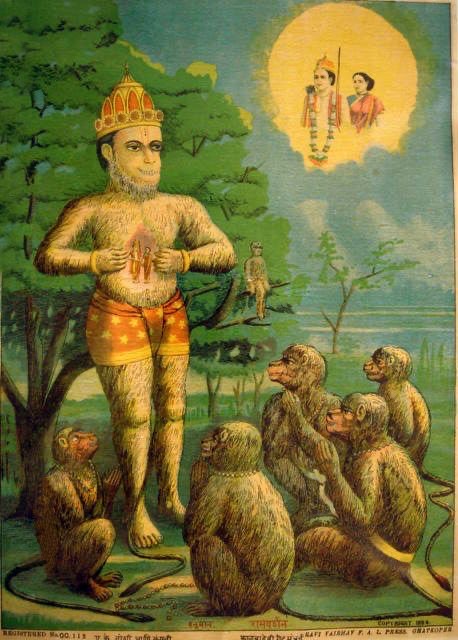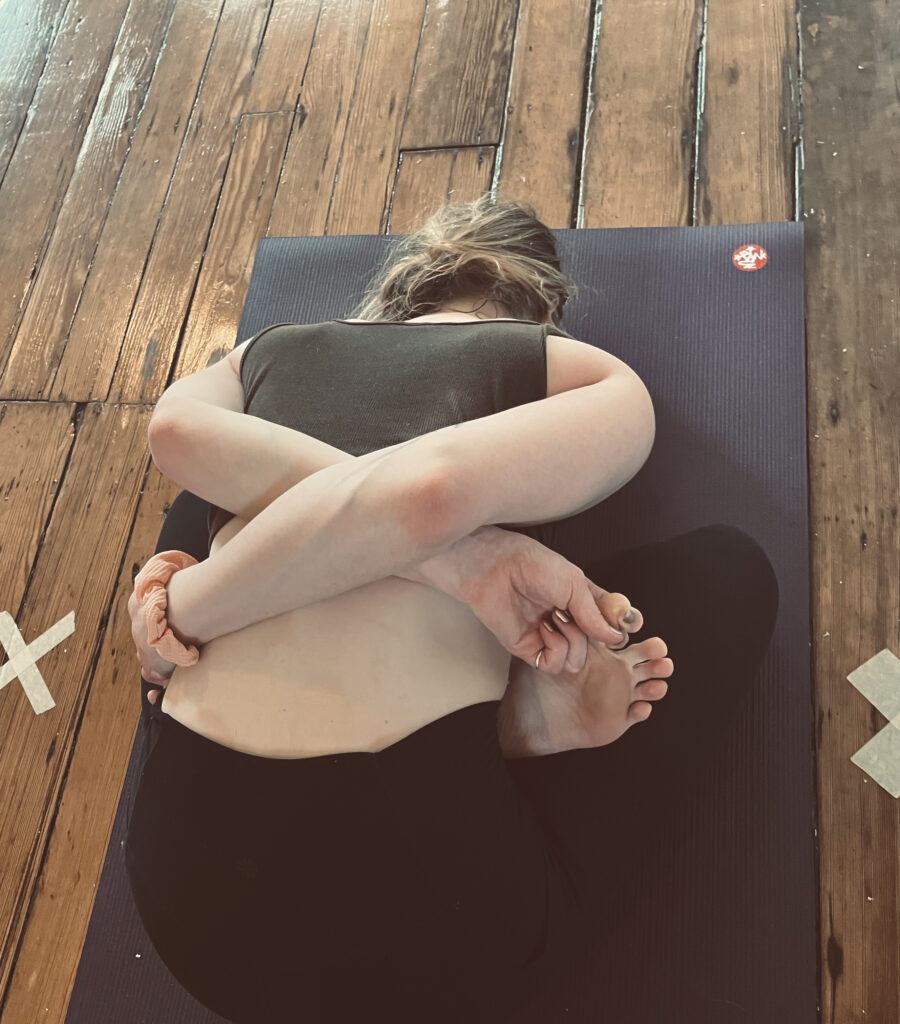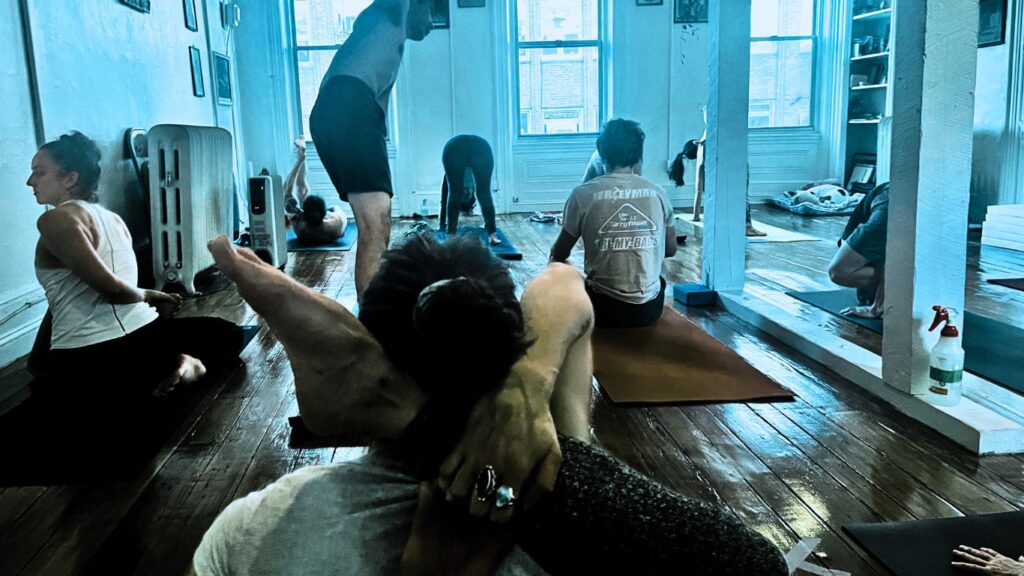About Mysore Style
In Mysore Class, the teacher works individually with students to teach them a sequence of postures, breathing, gazing points, and connecting movements.
The practice is a regular, simple discipline of movement and breath. One by one, postures are practiced with linking movements termed “vinyasa”. Breathing is choreographed onto these movements and postures to create a codified system. Over time and through regular practice, individuals learn to develop physical and mental skills which can lead to a spacious sense of awareness and intuition.
With consistency and repetition, students memorize the sequence. The teacher slowly adds more as is appropriate for each student. Working regularly with the guidance makes this practice accessible to anyone.
Students are able to practice at their own pace while surrounded by the energy and inspiration of other students in the room. They are encouraged to start their practice at any time within the timeframe of the class so long as they have enough time to finish.
Much of the learning in a Mysore class is based on your relationship with your teacher. The teacher observes your practice daily, and can provide feedback through hands on and verbal instruction. Guidance is offered to students on an individual level, taking into account the skill and capabilities of the practitioner so that their practice can flourish.
Sequences
A set of 6 sequences of asanas was developed through which, when practiced regularly over months and years, offer infinite ways for practitioners to explore deeper learning, know oneself, and become established in yoga.
- Primary Series or Yoga Chikitsa (yoga therapy) the first sequence
- Nadi Shodhana, (nerve cleansing) the intermediate series
- Sthira Bhaga (divine steadiness) advanced series
The name "Ashtanga Yoga" is not referring so much to the sequences of postures typically used, but rather has more to do with the lineage, and traditions of learning yoga. The Sanskrit meaning is "eight limbs" in Patanjali's yoga sutras.
These limbs are, yama (moral principles), niyama (observances), asana (posture), pranayama (breath control), pratyahara (withdrawal of the senses), dharana (concentration), dhyana (the practice of meditation) and samadhi (absorption or merging with the divine).

We are dedicated to serious yoga practice and teaching. Traditional yoga practices are passed down person to person, a one on one exchange between teacher and student, in which students develop a personal practice that is unique to their own experience. It is our belief that this regular practice unlocks new understandings that lead to a more balanced and fulfilling life.
On Meaning & Purposes of Asana (postural yoga) Practices
Asana practice serves to balance and purify the energies of the body and mind as a means of refinement towards greater connectedness to our Praktriti which is nature and the manifest world. Through yogic practices, we can clear the obstacles that prevent us from remaining connected to a higher vital energy and sense of balance.
The asana practices, practiced with breathing technique and awareness, serve as a bridge toward Mudra, embodied expression of higher consciousness.
The practice serves to facilitate a process of alchemization, towards residing in a greater connectedness to oneself.
One then relates within the the manifest world and oneself from this more awake, free, empowered space.
Asanas, practiced with devotional intention towards the divine (or ones divine nature) can lead practitioner toward a greater alignment with ones higher needs, a returning home to the heart center.

